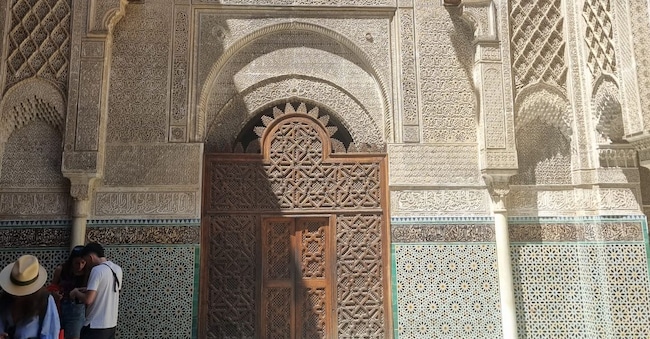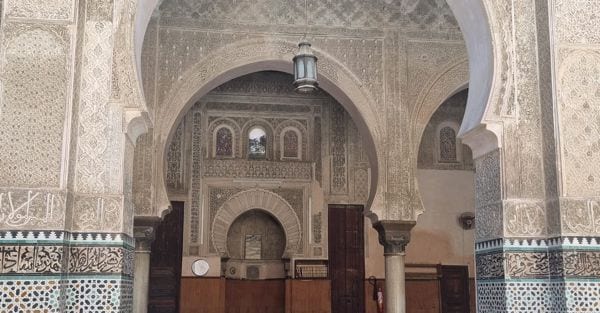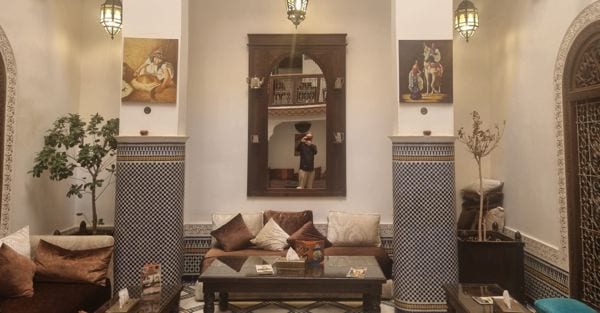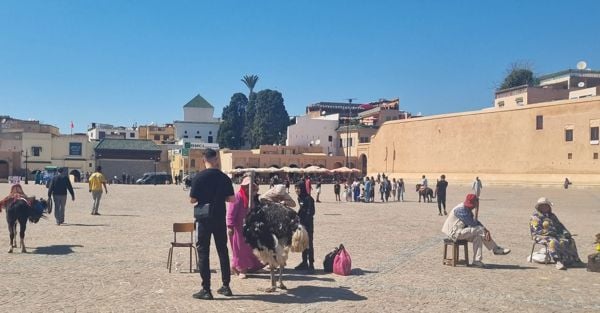Five Reasons to Choose Fes Over Marrakech


Marrakech or Fez? European tourists are increasingly attracted by Morocco, one of the most stable and safe Arab countries, and often organized tours are forced to choose between the two famous imperial cities, quite distant (over 500 kilometers) to be able to visit both in a few days or at the cost of a hit-and-run tour de force.
The numbers actually leave no room for doubt: in a country that last year attracted 17.4 million tourists (+20%, equally divided between Europeans and Moroccans living abroad) Marrakech is by far the most visited location, with around 150 flights a day from Europe and dozens of hotels scattered between the riads of the medina and the luxury resorts in the surrounding areas surrounded by palm groves.
Fez is much less frequented by international tourism, with just thirty flights a day at its small airport and a hotel offering inferior not only to Marrakech but also to seaside resorts such as Agadir (a surfer's paradise) or to growing cities such as Casablanca, Tangier or Rabat itself, the elegant capital of the Kingdom which is home to the sovereign Mohammed VI.
Yet, if you look closely, the “Florence of Morocco” offers a series of advantages that make it an alternative destination, and in some ways preferable, to Marrakech. Let’s see why.

The Medersa of Bou Inania in Fes
In terms of art and the quality of the monuments, there is no competition. If Marrakech can boast the Koutubia Mosque, the Medersa (Koranic school) of Ben Youssef and some historic buildings, Fez is an open-air museum with intact masterpieces and examples of very refined art. The two Medersas of Bou Inania and Al Attarine are fourteenth-century treasure chests that have reached our times largely unaltered, true masterpieces of Islamic architecture and sculpture. Not to mention the Al-Qarawiyyin mosque (built in 859 AD), with the oldest university in the world attached, where scholars such as Averroes, Ibn Khaldun and Maimonides studied. Unfortunately, the extraordinary complex cannot be visited by non-Muslims and tourists must content themselves with peeking from outside at the sumptuous interiors of the mosque or from above at its roofs with green ceramic tiles. In front of the entrances he will find a religious man who will politely point out that Moroccan Islam is tolerant and understanding but only Muslim believers can enter the mosque.
Beyond the most famous monuments, the winding streets of the medina of Fes hide small treasures at every corner, starting with the carved wooden portals with refined decorations.
-U58738688425QUO-600x313@IlSole24Ore-Web.jpeg)
Bab Boujloud, the main gateway to the medina of Fez
Visiting the attractions of Marrakech such as the Medersa Ben Youssef or the Majorelle Gardens is an experience similar to that of the European capitals of tourism. Crowds, noise, confusion. In Fez, however, with the exception of the area around the famous tanneries, the atmosphere is much more relaxed, less chaotic. In many streets of the medina the decibel level is low, the shopkeepers and artisans work calmly, in short, you breathe a more authentic, less frenetic air.
The comparison between the two main squares is the best summary: Jamaa el Fna, the gigantic square of Marrakech famous throughout the world for street food, snake charmers, slingers and musicians, is literally taken by storm by hordes of tourists crowded in the bars around the square and among the street artists. The confusion is so great that it really makes your head spin, the much vaunted charm for many is a nightmare of noise and disorder that often also becomes a hell of heat when the sun beats down mercilessly on the city.
The complete opposite of Boujloud square in Fez, surrounded on one side by the homonymous gate (Bab) that leads to the old city, on the other by the ancient city walls. Here you can walk peacefully among the citizens of Fez, proud of their splendid city and always smiling. No freak show, just scenes of daily life.
The same scenes that a tourist can witness when entering modern Fes on a sunny day towards sunset when the Fassi (that's what the inhabitants are called) flock to the fields around the city for picnics or improvised snacks among the ears of wheat in a festive atmosphere that has a strong savour of 1950s Italy.
-U76173622175vHg-600x313@IlSole24Ore-Web.jpeg)
The Chaouwara Tanneries in Fez
Moroccan traders have a problem: since tourists fly with low-cost airlines - the architects of the boom in arrivals in Morocco - it is more difficult to sell certain items because no one can afford to buy a large bag or an extra pair of shoes with only a Lilliputian-sized hand luggage. Given this premise, and space permitting in the suitcase, in Fez you can get some excellent deals. The thousand-year-old tradition of tanneries is visible in every corner of the medina and leather products from wallets to sandals to bags are well made and at reasonable prices (residents recommend buying outside the most famous tanneries which apply expensive markups).

A historic riad in the medina of Fes
In general, life for tourists in Fez is much cheaper than in Marrakech: hotels, riads, restaurants and shops are less expensive and you can get great prices. A truly unforgettable experience is staying in one of the riads in the medina: for a few dozen euros, tourists enter a world from the Arabian Nights, among finely restored fourteenth-century courtyards, rooms with wooden beam ceilings up to ten metres high and terraces with breathtaking views of the illuminated old city where you can have breakfast or drink a strictly non-alcoholic drink. Even visits to the main attractions such as the medersas are much cheaper: 20 dirhams (about 2 euros) compared to at least 100 in Marrakech.

El-Hedim square in Meknes
If the surroundings of Marrakech are unique for the beauty of natural sites such as the peaks of the High Atlas or the Agafay desert, the region of Fez is richer in history. It is home to one of the four imperial cities of Morocco: Meknès, which is less than an hour's drive towards Rabat and is a small masterpiece of history and noble art often overlooked by tourist flows.
Its calling card is the imposing city walls with monumental gates that lead to the medina. In front of the Bab el Mansour, a splendid seventeenth-century gate recently restored, El Hedim square opens up, the true beating heart of Meknès with its central market with strong colors (and smells) and crenellated walls. A stop in one of the bars-restaurants that overlook the square and offer a genuine and abundant meal for a few euros is highly recommended.
Inside the medina, the mausoleum of Moulay Ismail, sultan who reigned over Meknès for over half a century between the seventeenth and eighteenth centuries, is a must-see. The building that houses his tomb has returned to shine after a long restoration sponsored by UNESCO and can now be visited in all its beauty among the multi-colored zellij (assembly of tiles from which the term azulejos derives).
And that's not all: just a short distance from Meknès are the Roman ruins of Volubilis and other small gems like Moulay Idriss. For those who rent a car, the landscape of the Fes region is truly surprising: fertile and very green lands with rolling hills that recall certain areas of Central Italy. To find genuine cuisine, just stop at one of the many service stations at the entrance to the cities, behind which open splendid restaurants immersed in the greenery with fresh meat from the nearby butchers cooked in tajines, the characteristic terracotta dishes. The bill, for those accustomed to the prices of European cities, is unbelievable.
News and insights on political, economic and financial events.
Sign upilsole24ore




